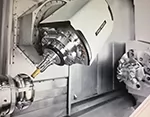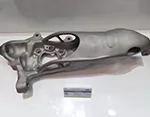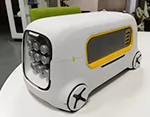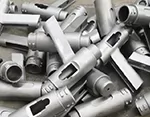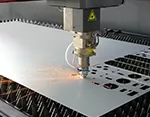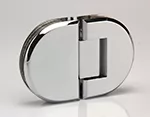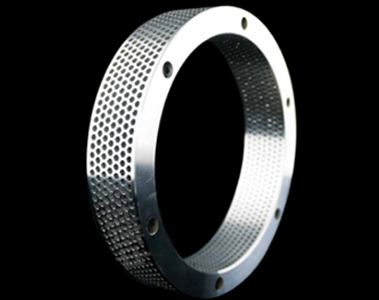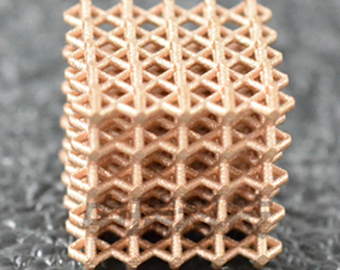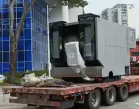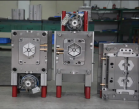-
Service
+
- CNC Precision Machining Service +
- Multi-Axis Simultaneous Machining Service +
- CNC Turning Service +
- Metal 3D Printing Service +
- Rapid Prototyping Service +
- Die Casting Service +
- Sheet Metal Fabrication Service +
-
Finish Serivces
+
- Polishing
- Grinding
- Brushed Finish
- Sand blasting
- Painting
- Powder Painting
- Anodizing
- Hard anodizing Service
- Passivation
- Zinc Plating
- Nickel Plating
- Chrome Plating
- Blackening
- Black Zinc Plating
- Teflon Coating
- Titanium Coating
- DLC Coating
- Laser Marking
- Silk Screen Printing
- Transfer Printing
- Micro Arc Oxidation
- Industries +
- About Us +
- Resource +
- Contact Us
- Quote

-
Service
-
>
-
>
-
>
-
>
-
>
-
>
-
>
-
>
-
- Industries
- About Us
- Resource
- Contact Us
What Are The Benefits of 3D Printing Metal?
Three Benefits of 3D Printing Metal Parts
The cost per part is the same for small and large batches.
Complex parts are no more difficult to 3D print than simple parts.
Metal 3D printing can produce parts that cannot be made by any other manufacturing method.
The cost per part for metal 3D printing is the same for small and large quantities.
As volumes increase, almost every available manufacturing method becomes cheaper on a cost/per-piece/part basis. Casting, machining, and molding (and others) are good examples. At small to medium volumes, they can be prohibitively expensive to implement. However, on a large scale, they are the cheapest method of manufacturing parts. This is due in part to the difference between overhead costs (costs incurred to make the part) and unit costs (costs required to make additional parts).
Metal 3D Printing
Casting and injection molding are excellent examples of high overhead/low unit cost - at small quantities, the discrete cost of the required tooling pushes the part cost to unreasonable levels. However, because the additional cost per unit is extremely low, the overall part cost becomes very inexpensive at high volume production.
3D printing metal turns this on its head by using a highly automated process that incurs almost no overhead costs. Minimal additional upfront labor is required to print the 100th part, and the system uses the same amount of consumables on each part.
In metal 3D printing, complexity is free
Years of manufacturing training have designed most engineers to hard code to design parts that are as simple to manufacture as possible. The reasoning behind this is both simple and economical: for most manufacturing processes, increased complexity equals increased cost. Complex parts require more work to program the machine, more advanced machines to build them, and more time to complete them. In most manufacturing methods, this stays pretty consistent. Everything from mills to castings is affected. Metal 3D printing is not.
Almost all metal manufacturing processes rely on a subtractive process (even casting requires molds). Traditionally manufactured parts start with a piece of metal, and a machine (usually a mill or something similar) removes the material to make the final part. For complex parts, performing these operations can be very difficult and time-consuming. The result is expensive parts that take a long time to make and waste a lot of material.
Metal 3D Printing
Because of the highly automated additive process, the cost of metal 3D printing is determined by part size rather than complexity. Toolpaths are completed by 3D printing slicing software, eliminating the labor and CAM costs inherent in traditional methods. No programming is required, only a small amount of preparation responsibility is required, and the cost of the part is only the material and maintenance of the machine. The additive process generates very little material waste and movement during part manufacturing. If the design is printable, there is no additional cost associated with complexity.
3D printers can make parts that other machines can't
Every manufacturing method has limitations - and 3D printing is no exception. However, because of its unique process, metal 3D printing can create parts that no other platform can. The result is parts that can be truly optimized for their use case, without the limitations of traditional manufacturing constraints. These parts range from the ultra-complex (e.g., topology-optimized parts in derivative design software) to process-optimized parts (e.g., injection molds with follow-form cooling channels or custom manifold designs). Most of these "impossible parts" have one key feature in common: complex curves, shapes, or cavities that simply cannot be removed from the material by traditional processes.
The breadth of impossible parts that can be manufactured on metal 3D printers has not yet been fully explored, so the applications are not yet fully understood. As metal 3D printing is adopted by the manufacturing public, we may see a new design paradigm centered on the unique benefits of 3D printing as a process. Metal 3D printing definitely offers an alternative approach to manufacturing, opening up new opportunities where cost or design was previously prohibited. Metal 3D printing will become an invaluable tool for engineers, designers, and manufacturers around the world.

